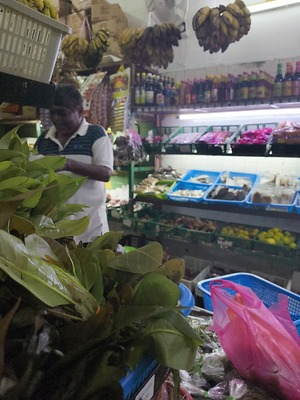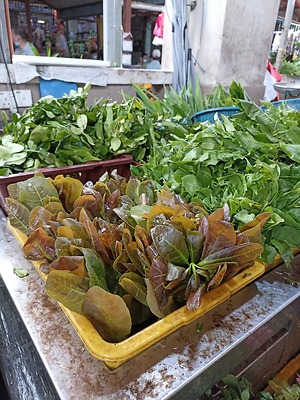


Cashew Leaves
Estimated Inventory, lb : 0
Description/Taste
Cashew leaves are leaves of the cashew tree. They are oval in shape with fine pronounced veins and midribs. Each leaf is 10 to 20 centimeters long, by 7 to 12 centimeters in width. Cashew leaves are best eaten when they are young and are a purplish green at the tips, and a brighter green on the bottom. When young, the leaves have a texture like hard spinach. They have a tangy, astringent taste.
Seasons/Availability
Cashew leaves are available year-round.
Current Facts
Cashew leaves are botanically classified as Anacardium occidentale. They may be referred to as Kasoy leaves, Pucuk Gajus and Daun Gajus. They are an uncommon grocery item. They are usually found in small quantities in the markets of Malaysia and the Philippines. The leaves and young shoots are used in salads and are a medicinal herb.
Nutritional Value
Research has shown that Cashew leaves are rich in antioxidants and have antifungal, antiparasitic, antibacterial, antiseptic, and anti-inflammatory properties. They contain vitamin B and vitamin C. They are a fair source of iron and calcium, and also contain zinc, magnesium, phosphorus, maganese, sodium and potassium.
Applications
Young Cashew leaves may be eaten fresh out of hand, like lettuce leaves. They are commonly included among the leaves in "ulam" salads in Malaysia. They may be dipped in a spicy sauce and eaten as a snack, or may be used as a garnish for fish and sambal dishes. Their astringent taste helps to bring coolness to spicy dishes. To store Cashew leaves, place them in a bag in the refrigerator, where they will last for several days.
Ethnic/Cultural Info
Cashew leaves are used medicinally in several cultures. In many places, they are used as an antiseptic. In Peru and India, they are chewed and used as toothpaste, and are further used to treat toothaches and gum problems. They may be pulped to make mouthwashes. In Africa, they are used to treat diabetes and malaria. In Java, the older leaves are turned into a paste and used to treat burns and skin conditions.
Geography/History
The Cashew tree originated in northeastern Brazil and now grows in subtropical parts of Africa, India, the Philippines and Southeast Asia.









